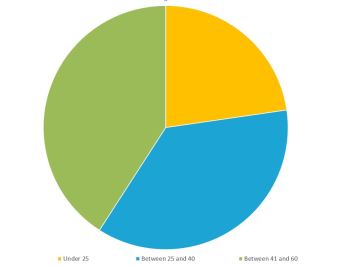Physiotalk have been carrying out research supported by Dr. Cathy Bulley, a Reader at Queen Margaret University, around tweetchats and continuing professional development. Our first research project looked at the impact of participating in a #physiotalk tweetchat and was presented at WCPT congress in 2017 and then published as an extended abstract in the European Journal of Physiotherapy


But we know that most of our followers do not actually participate in a tweetchat – in common twitter parlance they ‘lurk’ on the chat. So this became the focus of our next research project – looking to see if people who ‘lurk’ gain anything from that type of participation. We are presenting Stage 1 of this research at WCPT 2019 and will be also presenting a flavour of the Stage 2 results at Physiotherapy UK in November 2019 – so watch this space!
Our presentation is on Monday 13th May at 1.45pm (Geneva time!) and this blog post is timed to go out at as Janet starts speaking, to add to the information that will be presented in an WCPT 2019 platform presentation!
Abstract:
This has been enhanced with additional charts showing an overview of the wider results.
Background: Tweetchats are becoming a recognised method of engaging in continuing professional development (CPD). Previous research demonstrated that participants in a Physiotalk tweetchat valued the connectedness and the constructive change gained from participation. The phenomenon of ‘lurking’ on social media has long been recognised but there is little research examining the impact lurking may have on health care professionals CPD
Purpose: This study aimed to explore experiences and views of lurkers in a specific online twitter community in relation to continuing professional development. Lurking is defined as watching a tweetchat in real time or reading tweets or a transcript after the chat, but not posting tweets during the chat.
Methods:
A mixed methods two-stage study was planned to explore the perceived impacts of ‘lurking’ during a Tweetchat on participants’ CPD.
This is a report of Stage one, an online survey incorporating both open and closed questions based on the findings of previous research. Closed questions were analysed using descriptive statistics. Open questions were analysed using open, axial and selective coding developing themes building on those developed in the previous research.
Results: 44 complete responses were submitted. The survey respondents were 77.3% female with the majority in the 41 – 60 age group (40.9%). Whilst the respondents were predominantly from the UK (68.2%) most other global regions were represented.




Most chose to look at the tweets after the chat finished (54.5%). Free text responses indicated this was often due to being in a different time zone and availability during a chat. Most did lurk regularly, with 67% engaging at least monthly. The main driver for engagement was the topic of the tweetchat.




Connectedness
52.2% felt at least ´somewhat´ part of the community and 76.7% answered that it allowed connections with other physiotherapists around the world. This was reported as finding new people to follow especially those who they perceived as experts.



Constructive change
Whilst 52.3% of respondents reported that they used Physiotalk very little or not at all to access CPD, 75% did respond that they were prompted to look further into a topic, 81.8% said it had added to their knowledge and 65.9% said it had changed their views on a topic to a certain extent.





The overwhelming theme that emerged was that using Physiotalk broadened their views on a topic with a benefit seen that it was ´up to date´. Students reported that it enabled a window into the world of working practice.
Conclusion(s):
The response rate was low, illustrating the difficulty of recruitment in this section of the physiotalk community. Most of the respondents would not be classed as ´digital natives´. Their responses could be mostly mapped to the explanatory theory developed for participants in a tweetchat suggesting that lurkers derived similar broad outcomes to participants. The new themes that emerged were linked to lurking; issues with availability or time zones not allowing active participation as well as known themes such as the fast paced nature of chats being a barrier to participation.
Implications: Lurkers in a social media community can derive similar benefits to active participants